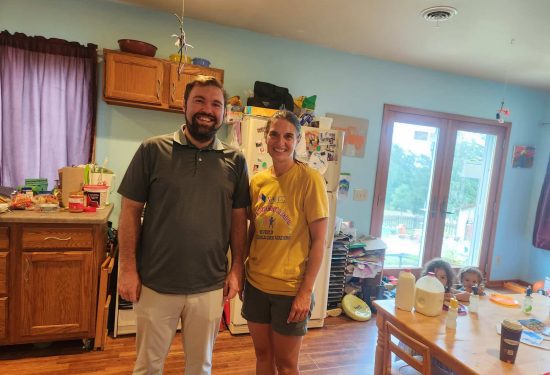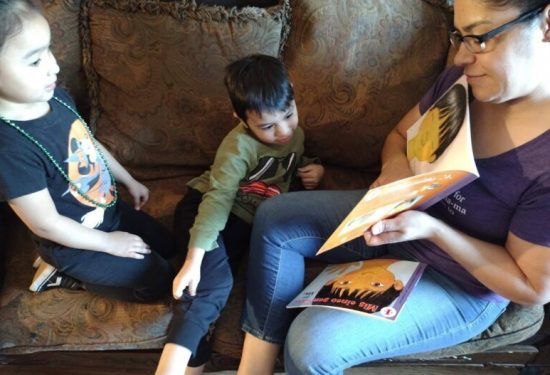In the first 100 days of the Trump Administration, we saw sweeping changes to many aspects of American policy and many more have been proposed. This is a time of major change and great uncertainty. We know that many home-based child care providers, families, advocates, researchers, and others in the field are feeling the direct impacts of these actions and fear the forthcoming actions. This blog post lays out key information to support you in making sense of this moment and taking action to protect yourself and your community and to impact the outcome of the proposed actions.
What actions have been taken?
Immigration Enforcement
The President and his executive office have significant control over the enforcement of immigration law and President Trump has signed several executive orders shifting policies related to immigration and has ramped up enforcement activities. In January 2025, the Department of Homeland Security announced the end of “sensitive” area protections which previously prohibited Immigration and Customs Enforcement (ICE) agents from making arrests at certain locations including places children gather, such as schools or libraries. It is still true that ICE agents cannot enter a private home without a judicial warrant even if that home also operates as a child care program. But providers who frequent libraries, parks, or even a playground at a local church and other community spaces should be aware that these spaces are not protected from ICE.
Immigration enforcement action is the most pressing issue of concern among the providers who Home Grown works with. The early childhood workforce is composed of a large percentage of immigrants: It is estimated that 20% of the workforce are immigrants, but in some communities like New York City, this number is much higher. It is estimated that 5.5 million children in America reside in mixed-status households. We recognize that new policies and enforcement actions pose a threat to both the workforce and the families served in child care. See additional resources from Home Grown here.
Federal Workforce Cuts
There have been significant cuts to the federal workforce including in the Administration for Children and Families. This office oversees the federal child care program, child welfare, and Head Start, as well as programs for children with disabilities, tribal child care, and refugee resettlement programs. The Administration has also closed five regional offices that support these programs. These offices and staff are responsible for clarifying policy for the states, offering technical assistance to states and grantees, and approving contracts and payments for child care, Head Start, and other programs. At present, we are seeing grantees and states struggle to get timely information and some delays to payments and contract renewals including those to Head Start grantees.
These disruptions could have a major impact on home-based child care programs: In 2023, 1,000 family child care programs served about 10,000 children in Head Start and 27% of the 214,816 providers in Child Care and Development Block Grant are home-based providers.
Student Loan Forgiveness Roll Back
On May 5, the Department of Education’s Office of Federal Student Aid (FSA) will start collecting student debt in default and this may include taking steps to garnish worker wages to do so. President Trump has also “signed an executive order aimed at limiting eligibility for the popular Public Service Loan Forgiveness program, and his Education Department revised some student loan repayment plans to no longer conclude in debt erasure.” This plan includes eliminating the Saving on a Valuable Education (SAVE) plan, which lowered monthly payments and accelerated debt erasure for some borrowers. The Trump plan limits but does not eliminate the Public Service Loan Forgiveness (PSLF) program.
Student loan debt burden is a major issue: 19% of the early childhood workforce holds student loan debt. This is higher than the national average. Among home-based child care providers, about 63% of family child care providers and both paid and unpaid family, friend and neighbor caregivers hold degrees or have attended some college. The sole proprietor status of home-based child care providers has resulted in their exclusion from Public Service Loan Forgiveness, which is currently available to those employed by governments and nonprofit agencies. The elimination of SAVE will likely have impacts on home-based child care student loan borrowers.
What has been proposed?
The Administration has made several public proposals that are relevant to home-based child care providers, families and communities, and several more have leaked to the press. The following proposed actions have not gone into effect; most require Congress to pass legislation before they could be implemented.
Elimination of the Department of Education
In March 2025, President Trump signed an executive order directing the Secretary of Education to work with Congress to abolish the Department of Education. The president alone does not have legal authority to do this and needs an act of Congress, so the final outcome of this action is unknown. The proposal includes permanently eliminating about half of the staff that work on programs within the purview of the Department of Education.
The Department oversees numerous programs, including:
- The Individuals with Disabilities in Education Act (IDEA) assures that children with disabilities, including infants and toddlers, are entitled to a public education. This program, along with Medicaid, funds services to young children with developmental delays and disabilities that can be offered in children’s homes and child care programs.
- The Preschool Development Grants (PDG 0-5), which offer funding to states to better integrate early childhood programs from pre-K to home visiting into educational systems.
- Title 1 is a program that ensures that schools in low-income communities receive additional federal funding and children have adequate educational services. Many Title 1 schools offer pre-K and rely on these funds to ensure they can make services available to low-income families in their communities.
- The Department also investigates civil rights violations in the education sector.
Elimination of the Department of Education may impact all of these programs and disrupt important funding and programs to the early childhood ecosystem.
It is important to note that free and reduced school lunch (and breakfast) programs and the Child and Adult Care Food Program (CACFP) are federally administered by the Department of Agriculture. A change within or about the Department of Education does not impact programming at the USDA.
Federal Budget
There are three related processes that are often referred to as the “budget”: the development of the president’s budget request; the congressional appropriations process; and the reconciliation process. All are moving forward simultaneously, adding to confusion and contributing to the feeling that this is all too much to keep track of.
Proposed 2026 Budget
The White House is required to send an annual funding request to Congress. This document makes recommendations for spending in every program that receives its funding one year at a time, including child care, Head Start, most education programs, and most housing programs. The president’s request can also include recommendations for policy changes, such as shuttering the Department of Education. The president’s budget request is a recommendation to Congress and will be debated and changed in a multi-step process that takes many months before final agreements on spending are reached.
On Friday, May 2, a very high-level version of the president’s budget request for fiscal year 2026 (starts October 1, 2025), which was missing many pieces, was made public. Additional details will be delivered to Congress and made publicly available over the course of May. Although leaked drafts indicate that the Administration is considering fully eliminating Head Start, the high-level budget proposal did not reveal what the president will propose for either Head Start or the Child Care and Development Block Grant (CCDBG). Head Start currently provides early learning and comprehensive services (health, mental health, and social support) to about 750,000 children including 10,000 children who are served by about 1,000 family child care programs. CCDBG supports child care for approximately 1.7 million children per month.
The released budget fully eliminates the Low Income Home Energy Assistance Program (LIHEAP), a program that assists low-income Americans with affording their utilities. Utility costs are a major driver of material hardship among child care providers and families with young children especially in parts of the country with extreme weather.
Once the complete president’s budget request is delivered to Congress, the Appropriations Committee will begin holding hearings and debating spending levels for each program that receives one-year funding.
The White House, House of Representatives, and Senate have begun negotiating the fiscal year 2026 federal budget.
Budget Reconciliation Package for 2025
The White House and Republicans in Congress also intend to move so-called “reconciliation” legislation to advance the president’s agenda. Republicans have passed a budget blueprint bill that calls for major cuts to programs in order to pay for the extension of the Tax Cuts and Jobs Act (2017) passed in Trump’s first term that gave major tax cuts to higher-income households and corporations. Budget reconciliation is a spending package that requires only a simple majority to pass in the House and Senate. Republicans are proposing large-scale spending cuts across mandatory government spending programs, including Medicaid, SNAP, and TANF, in this package.
Cuts to Medicaid and SNAP could have catastrophic impacts on child care providers and the children and families they serve. Early childhood education is one of the lowest-compensated professions in this country and 43 percent of early educator families rely on programs like Medicaid and SNAP to make ends meet. Specifically, 30% of child care workers and their families accessed health care through Medicaid or the Children’s Health Insurance Program (CHIP). Nearly half of all children in the U.S. (37 million) rely on Medicaid or CHIP. Depending on where you live, CHIP may be known by different names, such as “Alabama ALL Care” or “Badger Care” or “Cub Care.” Cuts to this program will undermine household income security and reduce access to healthcare services for children.
There are currently about 41 million people using SNAP each month, nearly half of SNAP recipients are children, and two-thirds of SNAP benefits go to families with children. Reductions in SNAP will also reduce family economic security and result in a greater number of children who go hungry.
What can you do?
We know that home-based child care providers are strong and powerful community builders, partners, and advocates. Many of the proposals described here are not in effect and there is time to change course. Elected leaders in all parties, at all levels – especially at the federal level! – need to hear from their constituents. Write to and call your elected leaders’ offices to share your thoughts on these proposals. Engage your peer providers, families, and community members in this, too! Here are a few easy-to-use action centers that help you send messages to your elected officials:
- First Five Years Fund (FFYF) Action Center, and in particular, their message on Head Start
- Food Research and Action Center (FRAC) message about SNAP
- National Women’s Law Center (NWLC) Action Center
Constituents may also have opportunities to weigh in with their members of Congress during district work periods over the weeks of Memorial Day, the Fourth of July, and the month of August when members of Congress will be home holding meetings, town halls, and other events. If you are interested in engaging in advocacy with your representatives, please fill out Home Grown’s interest form in English or Spanish to share ways that you want to get involved.
We encourage you to stay informed and use reliable and well-vetted news sources to gain information. There is a lot of misinformation and poor-quality information out there. We encourage you to read or watch original news articles from trustworthy sources and not to rely on videos on social media for information.
And lastly, and most importantly, look after yourself. This is a stressful moment with a barrage of major changes and threatening proposals. Please prioritize your health and well-being – rest, take walks, eat well, and drink lots of water. Consider ways to recharge, reduce stress, and find joy. We all need to be healthy, strong, and focused and your well-being is a big part of that!




